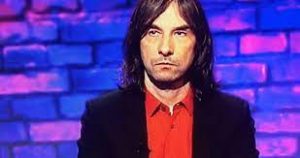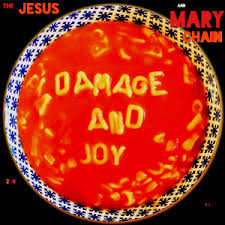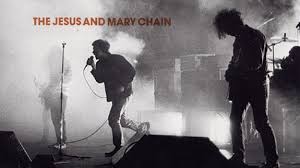
© BBC / From the Guardian
Are you one of those many British people who feels ‘underserved and unheard by their media’ because your politics are a wee bit to the right? Are you hostile towards that trendy left-wing phenomenon called ‘wokeness’ and convinced that ‘the direction of news debate in Britain is increasingly woke and out of touch with the majority of its people’?
Yes, life must be horrible for you in 2021 Britain. There’s absolutely nobody in the British media to defend your views because it’s all so hideously lefty and woke. Well, except for the Daily Express. And the Daily Mail, of course. But aside from those two newspapers, there’s nobody… Oh, and the Sun. And the Daily Telegraph. And the Spectator. And a good chunk of the opinion pages of the Rupert Murdoch-owned Times. But that’s it.
Meanwhile, with so many volleys of lefty, woke bullets whizzing around nowadays, there aren’t any right-wing commentators at all who’re bold enough to stick their heads above the parapet. Apart from Toby Young, bless his baldy little socks. And that feisty Julie Burchill. And Jeremy Clarkson, James Delingpole, Darren Grimes, Daniel Hannon, Julia Hartley-Brewer, Katie Hopkins, Quentin Letts, Rod Liddle, Richard Littlejohn, Kelvin Mackenzie, Jan Moir, Tim Montgomerie, Charles Moore, Douglas Murray, Fraser Nelson, Brendan O’Neill, Alison Pearson, Melanie Phillips, Andrew Pierce and Sarah Vine. And that plucky actor chappie, what’s his name? Lawrence Fox? Anyway, there’s only a tiny handful of brave right-wing holdouts against wokeness. You can’t even include Piers Morgan among them. Poor Piers used to be good on Good Morning Britain, but he’s been off the telly since his crusade against Meghan Markle, Woke Evil Personified, made him so angry that his head burst in a geyser of liquified gammon.
Thus, there’s hardly any media outlets or media people in Britain to defend your honest, decent, patriotic, right-wing sensibilities against the predations of the horrible, lefty, woke establishment. That’s an establishment headed by Prime Minister Boris Johnson. That’s right, the shamelessly woke Boris ‘tank-topped bumboys’, ‘piccaninnies with watermelon smiles’, ‘Muslim-women-look-like-letterboxes’ Johnson. An establishment run by a cadre of Marxist provocateurs like Priti Patel, Matt Hancock, Michael Gove and Dominic Raab, who’re forever up to no-good, lefty, woke activities such as imprisoning asylum seekers in pestilent hellholes, protecting statues of mass-murdering slave traders, wallpapering the rooms where they do Zoom calls with Union Jacks, and doing anything up to and including eating live cockroaches and hammering rusty nails into their eyeballs to prove their loyalty to Her Majesty the Queen.
Luckily, salvation is now at hand. Today sees the launch of a new TV channel called GB News, which promises to push a right-wing agenda that all sensible, salt-of-the-earth Britons will agree with and promises to call out this woke nonsense that possesses our lefty British media and government. Needless to say, just by existing, GB News has gone against the grain of the British establishment, and its creation is thanks to the efforts of several, heroic, anti-establishment figures. These include financial backers like the anti-establishment American TV company Discovery; and the anti-establishment investment fund Legatum, which is based in that hotbed of punk rock, Dubai; and the anti-establishment hedge-fund boss Sir Paul Marshall, whose son Winston plays the banjo in Mumford & Sons, a band so hardcore anti-establishment it makes Rage Against the Machine look like wimps.
And the chair and main presenter of GB News is the most awesomely anti-establishment figure you can imagine: Andrew Neil. Well, he’s anti-establishment if you look at his CV with one eye closed and the other eye half-open and manage somehow to miss his 11 years as editor of the Sunday Times; his involvement in the founding of Sky TV; his decade as editor-in-chief with the Barclay Brothers’ Press Holdings group, overseeing the Scotsman, the Business and the European; his 15 years as chairman of the publishing company ITP Media Group (also based in Dubai, home of the Sex Pistols and the Clash); and his 17 years with the BBC. And that villa he owns in the South of France.
Anyway, setting the sarcasm aside for a moment… I was aware of Neil’s malign influence in the British media from an early age. At school at the start of the 1980s, I did a Scottish Higher course in Modern Studies and I remember being advised by the teacher, Sandy Bowick, to read a ‘quality Sunday newspaper like the Observer or the Sunday Times’ every weekend to keep abreast of what was happening politically in the world. Accordingly, I got into the habit of reading the Sunday Times, which was still under the stewardship of the much-respected Harold Evans. But tragically, the gimlet-eyed Rupert Murdoch acquired the Sunday Times in 1981 and by 1983 had installed Andrew Neil as its editor. Neil wasted no time in transforming this once laudable newspaper into the snide, shrill, right-wing shout-sheet that it remains to this day.
The Sunday Times wasn’t the only example of a newspaper being subjected to Andrew Neil’s reverse-Midas touch, i.e., instantly turning to shit in his hands. Hired by the Barclay Brothers in the mid-1990s, newspapers he supervised like the European and the Business suffered declining sales and eventually folded. Worst of all, he became editor-in-chief of Edinburgh’s one-time quality daily, the Scotsman. It’s hard to believe today but the Scotsman was a newspaper that once was widely read, made its points intelligently and carried some influence – as much as any newspaper published 400 miles from London could. Among other things, up until the 1990s, the Scotsman was a keen supporter, in its cautious and genteel way, of constitutional change in Scotland to allow the country more say in running its affairs.
In the late 1990s, after spending most of the decade in Japan, I found myself living in Edinburgh and I assumed I’d get into the habit of reading the Scotsman again. I bought a few issues and gave up. It’d suddenly acquired an unpleasantly right-wing editorial tone. It was scathing about the idea that Scotland should get any degree of home-rule from London, even though the Scottish population had just voted for the creation of a devolved Scottish parliament in a referendum in 1997. Hold on, I thought. Hadn’t the Scotsman, the old Scotsman, been in favour of Scottish devolution? Then one night I saw Neil’s visage on a Scottish current affairs programme, where he was introduced as ‘editor-in-chief at the Scotsman’. Horribly, it all fell into place for me. Oh no, he’s back, I despaired. Returned to wreck yet another, once perfectly-good newspaper.
I suspect Neil’s tenure at the Scotsman alienated the Scottish demographic that it needed to survive as a healthy business concern. I knew plenty of folk in Edinburgh who were around my age and, like me, were centre or left politically and interested in current affairs. They weren’t young enough to be into new-fangled digital media and would have happily bought a traditional, physical newspaper if they thought it was worth reading. But whenever its name came up in conversation, such people would shrug and say dismissively, “The Scotsman? Never read it now.”
Although Neil had nothing to do with the Scotsman after it was acquired by the London-based Johnston Press in 2005, the newspaper remained on the right, where he’d dragged it, and never recovered from the dose of journalistic syphilis it’d contracted from him during his regime. By 2018, it was in the hands of JPIMedia and had a daily circulation figure – the one currently quoted on its Wikipedia page – of under 16,400 copies. It’d had to lay off staff-members, reduce its numbers of pages and supplements, and flit from its old headquarters on Holyrood Road to a new one on Queensferry Road that was less than half the size and a third of the rent. The last time I looked at it, much of what it printed was either shallow and vacuous, or hysterical, kneejerk, Daily Mail / Daily Express-style crap.
You’d think that with his antipathy to all things mild-mannered, lily-livered, pussyfooting and, well, woke, Andrew Neil would have given the BBC a body-swerve. And yet during the past two decades he’s done very nicely out of the venerable corporation. Most prominently, he hosted the BBC’s This Week programme (2003-2019), in which Michael Portillo, Diane Abbott and him would sit in a studio and discuss the week’s current affairs whilst indulging in a gruesome three-way mutual-admiration / flirtation fest. Indeed, at the time, I thought it was the most fascinatingly dreadful thing on British television. Not only did Neil and co. believe they were offering cutting insights into the nation’s politics, but they also seemed to think they were cool. Funny, even. And nothing is worse than people who think they’re funny, but aren’t funny, trying to be funny.
For example, I can think of few things more ludicrous than the sight of Neil and Portillo prancing around in the style of the video for Peter Kay’s chart-topping Is This the Way to Amarillo, as they did during the title sequence of one episode in 2005. At least in 2018, when they got Bobby Gillespie from the impeccable post-punk, alternative-rock band Primal Scream onto This Week to talk about Brexit – yes, this is a strange sentence I find myself writing – Gillespie summed up the viewers’ feelings at the episode’s end. By this point, Neil, Michael Portillo and Caroline Flint (drafted in as a replacement for Diane Abbott) had jumped up and starting cavorting around the studio in the manner of the briefly popular, crap Internet dance craze the Skibidi Challenge. Not only did Gillespie refuse to take part in this cringe-inducing farrago, but he sported the stony countenance of a man who’d just discovered a giant dog turd on the end of his shoes. (Mind you, having Michael Portillo dad-dancing beyond the ends of your shoes wouldn’t be much better.)

©BBC / From clashmusic.com
I’ve written scornfully about Andrew Neil and GB News and the guff they’ve tried to peddle about being some courageous, anti-establishment bulwark against a supposed tidal wave of wokeness. It’s complete disingenuous garbage. However, I have no doubt that they’ll find an audience. One thing about right-wingers is their unswayable belief that they’re the victims, even when a mountain-range of evidence proves they’re actually the victors. Britain has been in thrall to right-wing doctrines since the 1980s, when Margaret Thatcher proclaimed there was ‘no such thing as society’, till today, when those in power claim to belong to the Conservative Party but are basically Nigel Farage’s reactionary, xenophobic United Kingdom Independence Party (UKIP) in all but name. For a few years in the middle, Tony Blair might have constituted a blip, but he was hardly a left-wing blip. Yet in the paranoid minds of right-wing Britons in 2021, the nonsensical belief that everything they hold dear is threatened by Marxists and social justice warriors is probably more intense than ever.
He might be an utter chancer, but there’ll always be plenty of deluded souls willing to lap up Andrew Neil’s brand of bullshit.






